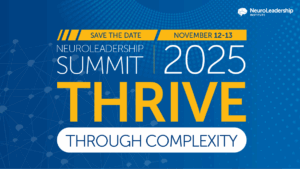This week, Starbucks responded to public outrage following the arrests of two black men who were simply waiting to meet a friend at one of its Philadelphia locations. As a part of a larger response, it announced it would shut down 8,000 stores for one day to give racial bias training to 175,000 workers. That’s $12 million in lost revenue, according to some estimates.
This move sends a powerful signal that avoiding bias is a priority for Starbucks. But by itself, mandatory racial bias training is suboptimal, with the risk of many counterproductive effects. In some cases, compulsory trainings like these can actually lead employees to display more bias.
When autonomy needs are violated—like when training is mandatory—people often react. In a classic example, white participants who perceived that they were forced to agree with an argument about bias against blacks felt more prejudice compared with whites who felt they could choose to agree, who felt less. In studying decades of industry data, researchers have found that mandatory training usually uses negative incentives (don’t do this/be like that) and the positive effects only last a couple days. Voluntary training, on the other hand, has been linked with significant increases in under-represented groups entering into management.
As a research organization, our scientists have spent years studying why organizations that have, like Starbucks, made commitments to inclusivity have not achieved the results they sought. The science suggests that such initiatives have failed to fully reach their goals not because of a lack of commitment or focus—which Starbucks’ leadership is clearly addressing—but because of faulty theories of how bias works and how to mitigate it.
Here’s what the science suggests matters most for breaking bias, especially if you’ve made an intervention mandatory.
Work on both kinds of biases
Bias plays a role in why the loudest person in the room gets listened to the most, why we hire people who remind us of ourselves, and why we give better performance ratings to people who impressed us recently. But it’s also the reason why we can guess where the forks are stored in a friend’s kitchen. Our biases are simply cognitive shortcuts.
How you stock a store, how you do scheduling, where you invest resources, and other everyday business decisions can be guided by biases.
Instead of focusing on only social biases, companies should think about how biases appear in all of their operations. Spotting biases in business decisions gives people practice in identifying biases and puts focus on the fact that we all make accidental errors across the board. This broadening decreases the likelihood of defensiveness when a social bias is called out. It normalizes the fact that if you have a brain, you’re biased.
Mitigate biases not just as individuals, but as teams
Too many bias interventions are based on prescriptions for learners like “search your mind for bias.” This is ineffective, to say the least. Bias is individually unconscious, no matter how much you intellectually understand it.
While humans tend to be terrible at self-evaluations—we all think we’re more beautiful and better drivers than we actually are—we can see other’s behavior a little more clearly. Our own biases are largely outside of our conscious awareness, but other people’s biases can become quite obvious with some training.
To do this, teams need a common language for identifying bias that is non-threatening. “We have a habit of letting the people in the room lead the discussion during conference calls—do you think that’s a distance bias at work?” such a conversation may go. “Maybe we should start the meeting with the people on the line?”
You’ll get no arguments from us against people individually striving to become more equitable and fair in their interactions with the world. But in an organizational context, having normalized, nonthreatening conversation about bias is one of the quickest ways to lasting change. Across organizations in three industries, we found that two weeks after a light, digital training, a full 95% of 274 participants reported discussing bias at work at least once a week, with a third of participants doing so at least four times a week. As in so much of life, it’s about having the right words, in a group setting that lets you use them. We believe that this process of identifying process in groups with shared language is central to the success of bias-breaking initiatives.
Build habits, not intentions
Priorities and intentions have a way of going out the window when you’re stressed, tired, or multi-tasking. To create behavior change, it’s better to focus on building habits—which, the research says, is best achieved through if-then plans. That takes making the right action out of the responsibility of deliberative cognition (“should I do this or that?”) and instead allows you to stick to a script.
In a retail context, an if-then plan could be formulated as “If you’re in doubt about a customer, ask three different colleagues who think differently than you.” In the churn of multitask-laden knowledge work, where distance bias has a way of crowding out strategic thinking, a personal if-then plan could be “when I get to my desk in the morning, I’m going to pick out the most important task relative to my goals that day, and make sure it gets done.”
Prioritization is vitally important, but awareness is overrated. Real culture change, regarding bias or otherwise, requires cultivating the right habits, fortified by the right language. The most effective learning happens over time, with topics surfaced and revisited repeatedly. These habits then need to be supported by systems that reduce bias at the source.
Just like you can’t become strong by lifting a single gigantic weight, you can’t change habits in a single day. The education needs to be ongoing, baked into the rhythms of the organization. Lasting change requires lasting learning and sustained prioritization.
Take it from Johnson himself: “Closing our stores for racial bias training is just one step in a journey that requires dedication from every level of our company and partnerships in our local communities,” he said.
David Rock is director, Khalil Smith is head of diversity and inclusion, and Heidi Grant is head of research at the NeuroLeadership Institute.
SEE ALSO: The Biggest Myth About Growth Mindset






